70-200mm F2.8
DG DN OS
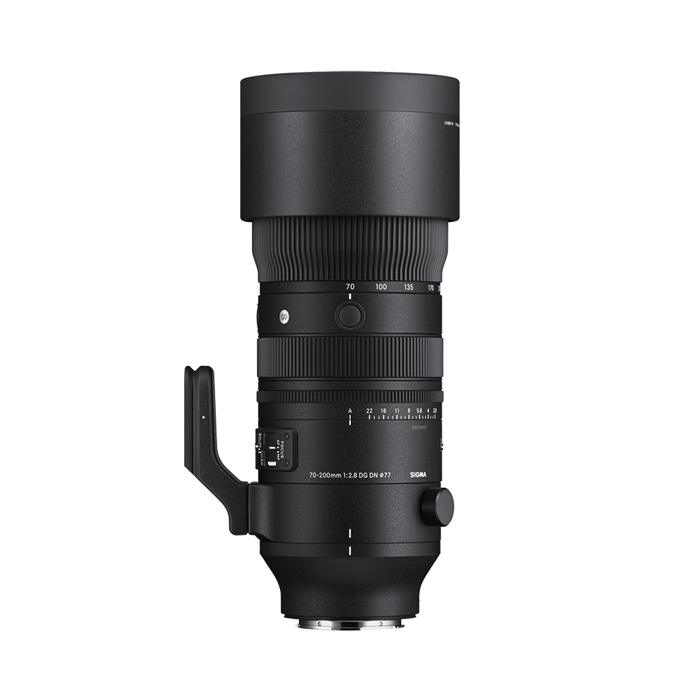

- Available for Sony E-mount & L-Mount
- Expressive imaging capabilities with latest optical design
- Dual High-response Linear Actuator (HLA) focus system
- Dust and splash-resistant structure
- Latest OS2 Optical Stabilization up to 7.5 stops
- Inner zoom and inner focusing
- Minimized focus breathing at all focal lengths
- Superior build quality of SIGMA Sports line
- Completes F2.8 DG DN full-frame mirrorless trio
- Made in Japan
AWARDS
|
professional photographers - HOT ONES |
2024 |
| Angle of view | Telephoto |
|---|---|
| Camera Type | Mirrorless |
| Lens Mount | L-Mount, Sony E-mount |
| Sensor Size | Full Frame |
| Construction | 20 elements in 15 groups (6 FLD, 2 SLD, 3 aspherical elements) |
| Angle of view | 34.3° -12.3° |
| Number of diaphragm blades | 11 (rounded) |
| Minimum aperture | F22 |
| Minimum focusing distance | 65 (W) - 100 (T) cm |
| Maximum magnification ratio | 1:5,2 (at focal length 200 mm) |
| Filter diameter | 77 mm |
| Dimensions (diameter x length) | Sony E-mount ⌀ 90,6 mm x 205,0 mm |
| Weight (g) | Sony E-mount 1335 g |
| Edition number | S023 |
| Supplied Accessories | Lens Hood LH860-01, Front Cap LCF-77mm III, Rear Cap LCR II, Soft Lens case LS-591SEL, Tripod Socket TS-151 |
| Accessories | WR Protector Filter 77mm, WR C-PL Filter 77mm, Protector Filter 77mm, USB-dock UD-11 (L-mount), |
| EAN-code | Sony E-mount 085126591656 |
| Specifications Info | * The appearance and specifications of the product are subject to change. |
High-speed AF and optical stabilizer function that maximize superior optical performance
The Sigma 70-200mm F2.8 DG DN OS | Sports, developed with professional use in mind, offers not only high optical performance, but also high-speed AF with a dual HLA (High-response Linear Actuator) and an optical stabilizer function with up to 7.5 stops. The Sports line lenses offer high optical performance, and all functions are based on state-of-the-art technology.
High descriptive performance at all zoom and focus ranges
The latest optical design, which employs luxurious glass materials including 6 FLD and 2 SLD elements of special low-dispersion glass, delivers high resolving power throughout the entire zoom range. Three aspherical lenses are used, as they are now indispensable for superior optical performance and streamlined lens construction. The exceptionally high precision of the aspherical lenses, which take advantage of the technical capabilities of Sigma’s only production facility, the Aizu factory, further improves optical performance. The incorporated floating focus is advantageous in improving short-range performance, ensuring a stable, high-level image quality throughout the entire range from the minimum focusing distance to infinity.
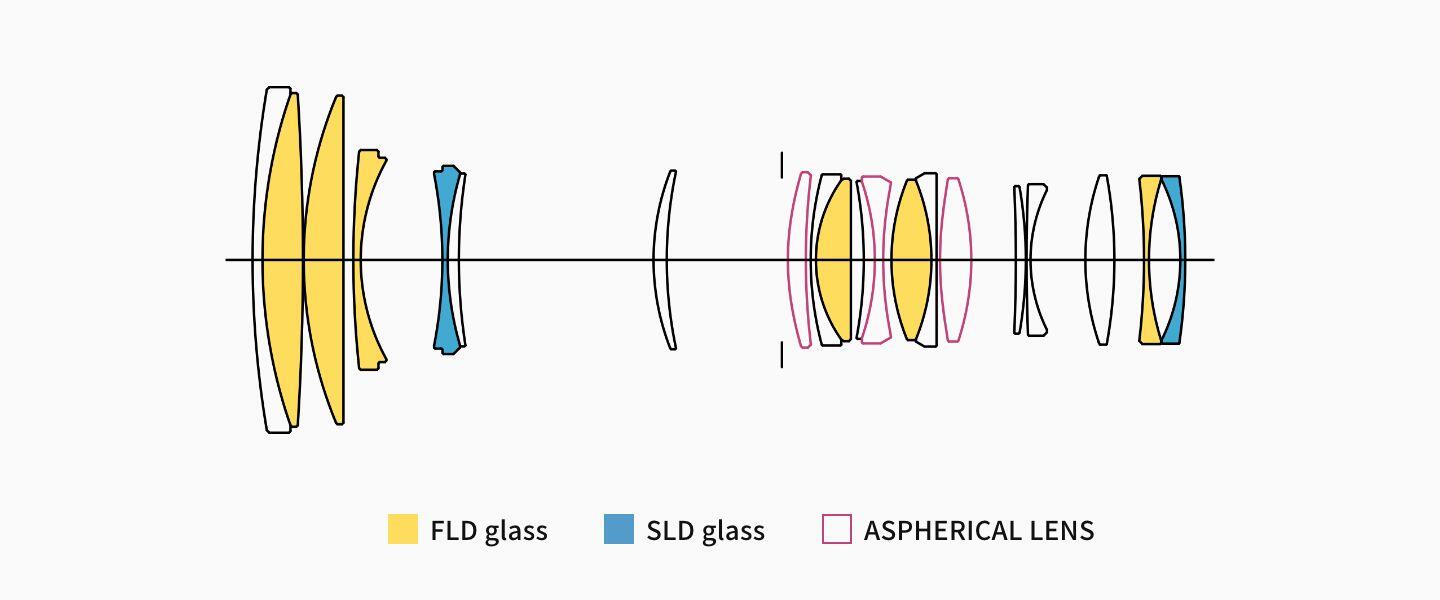

High-speed AF with a dual HLA
The Sigma 70-200mm F2.8 DG DN OS | Sports with floating focus has a structure in which the two focus groups move in opposite directions, thereby reducing the amount of focus lens movement by about half. In addition, the use of an HLA (High-response Linear Actuator) motor in each of the two focus groups enables high-speed autofocusing. In addition to being fast and accurate, the lens also employs a control program that is designed to be quiet, so users can shoot movies comfortably without worrying about noise.
OS2 algorithm in optical stabilizer function
The latest OS2 optical stabilization algorithm provides an extremely high image stabilization effect of 7.5 stops at the wide end and 5.5 stops at the telephoto end*. The lens is equipped with two OS modes: Mode 1 is suitable for general shooting, and Mode 2 is ideal for panning shots of motorsports and other sports. In Mode 2, Sigma’s Intelligent OS, an algorithm specially designed for panning shots, enables effective image stabilization even when the camera is moved vertically or diagonally, irrespective of the horizontal and vertical orientation. This ensures that the subject’s movement can be captured without losing the panning shot effect.
*Based on CIPA guidelines (Measured at 70mm and 200mm with a 35mm full-frame image sensor)
Designed to minimize focus breathing
The lens has been designed to suppress focus breathing. The change in angle of view due to focus shift is minimized, creating a natural-looking focus shift when recording video.
Designed to minimize flare and ghosting
Flare and ghosting, which reduce image quality, are addressed under all conditions of incident light based on the most advanced simulation technology. High backlight resistance enables clear and sharp images under any lighting conditions.
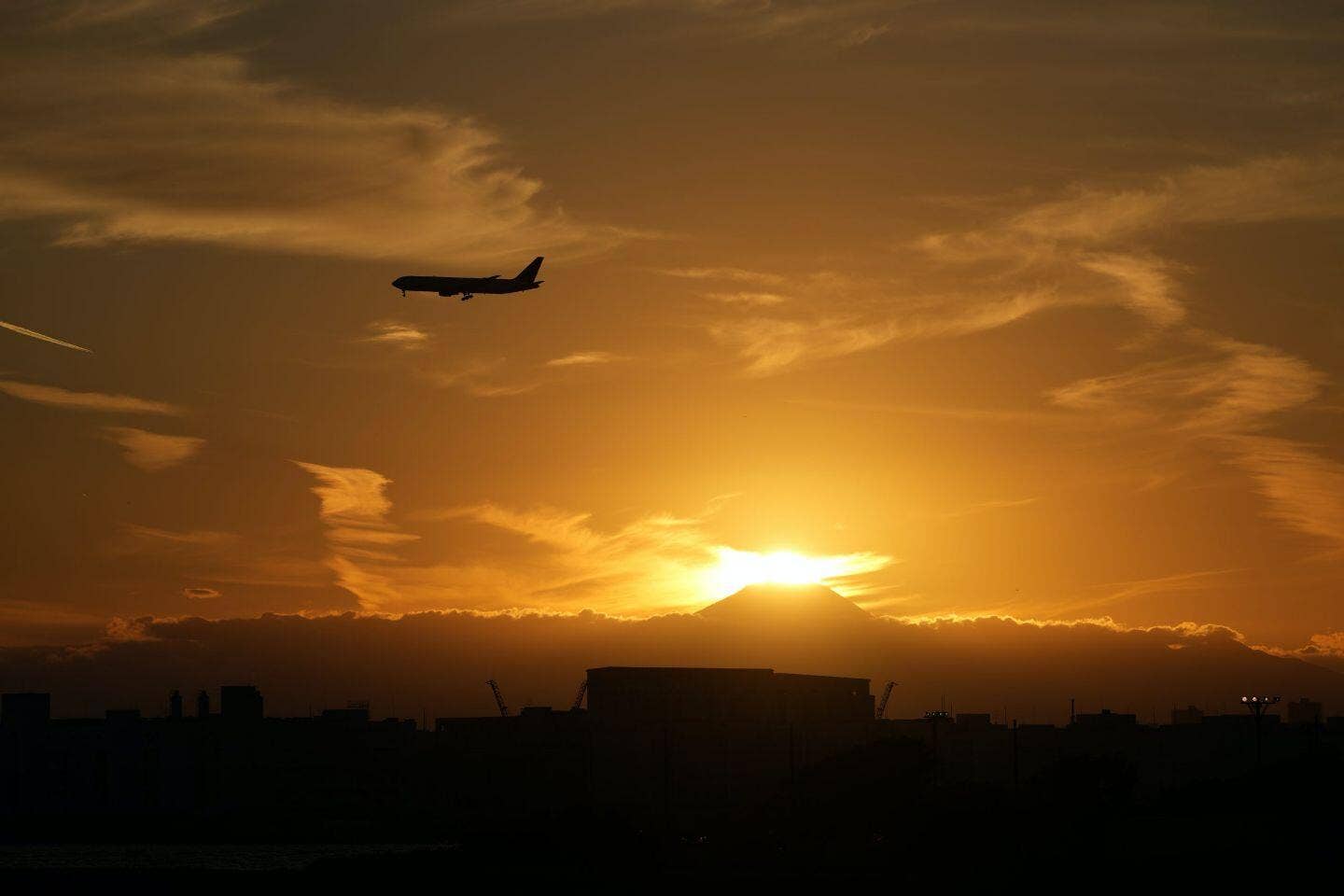

Top-level build quality condensed into a highly mobile lensDesigned to minimize flare and ghosting
Sigma is committed to excellent build quality in all its lenses. Among them, the Sigma 70-200mm F2.8 DG DN OS | Sports, which is part of the Sports line, offers not only high weather resistance performance for shooting in harsh environments, but also improved quality and durability through the use of cutting-edge materials in appropriate places based on a streamlined optical and mechanical design. At the same time, a high level of mobility is also realized, resulting in a professional equipment that can be used with confidence over the long term.


High quality and durability despite its small size and lightweight
The latest optical and mechanical design streamlines the lens configuration and internal structure, resulting in a significantly smaller and lighter body than the previous Sigma 70-200mm F2.8 DG OS HSM | Sports model. The body, including the hood, features a “multi-material structure” that optimally arranges materials such as magnesium, CFRP*1, and TSC*2. Even with enhanced mobility, the lens features Sigma’s renowned excellent build quality, including high durability, reliable rigidity, and various control rings and switches that have been carefully designed to feel good.
*1 CFRP (carbon fiber reinforced plastic), a light but strong material used in the interior and exterior fittings of aircraft, among many other applications.
*2 TSC (Thermally Stable Composite) is a type of polycarbonate with a thermal expansion rate similar to that of aluminum. It has high affinity to metal parts which contributes to high quality product manufacturing.
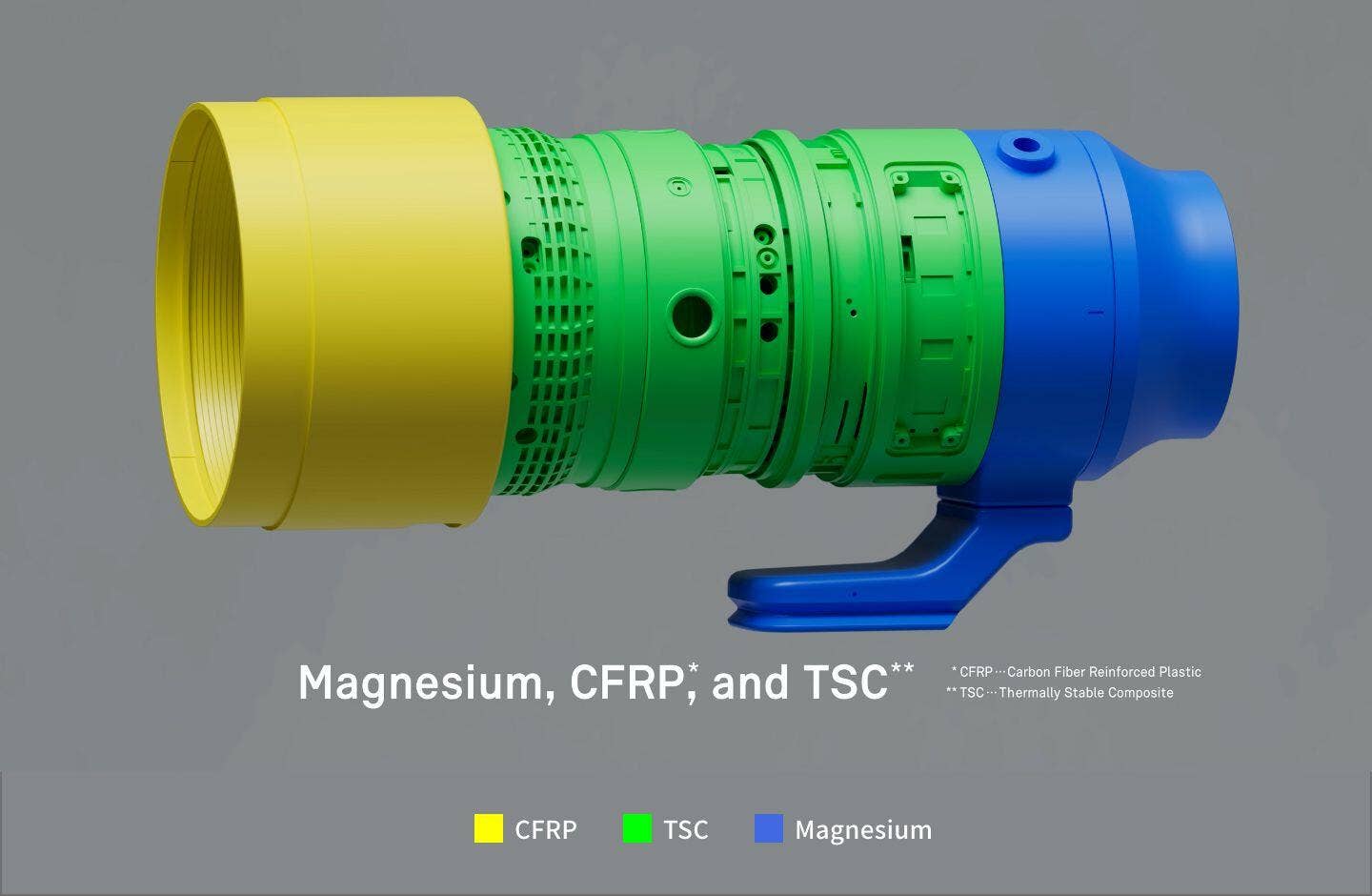

Adoption of inner zoom mechanism
The zoom mechanism employs an inner zoom. Since the total length of the lens does not change with zoom operation, it is easy to handle when shooting hand-held, highly stable when installed on a gimbal, and resistant to dust and water droplets.
Weatherability of Sports line specifications
The mount connection, manual focus ring, zoom ring, switches, switch panel and exterior connection are all dust and splash resistant* to prevent dust and dirt from entering the lens. Further, the front element of the lens features a water and oil repellent coating to facilitate maintenance when water droplets or dust adhere to the lens.
*The structure is designed to be dust and splash resistant, but not waterproof. Be careful not to bring the lens in contact with a large amount of water. Water inside the lens may cause major damage and even render the lens unrepairable.
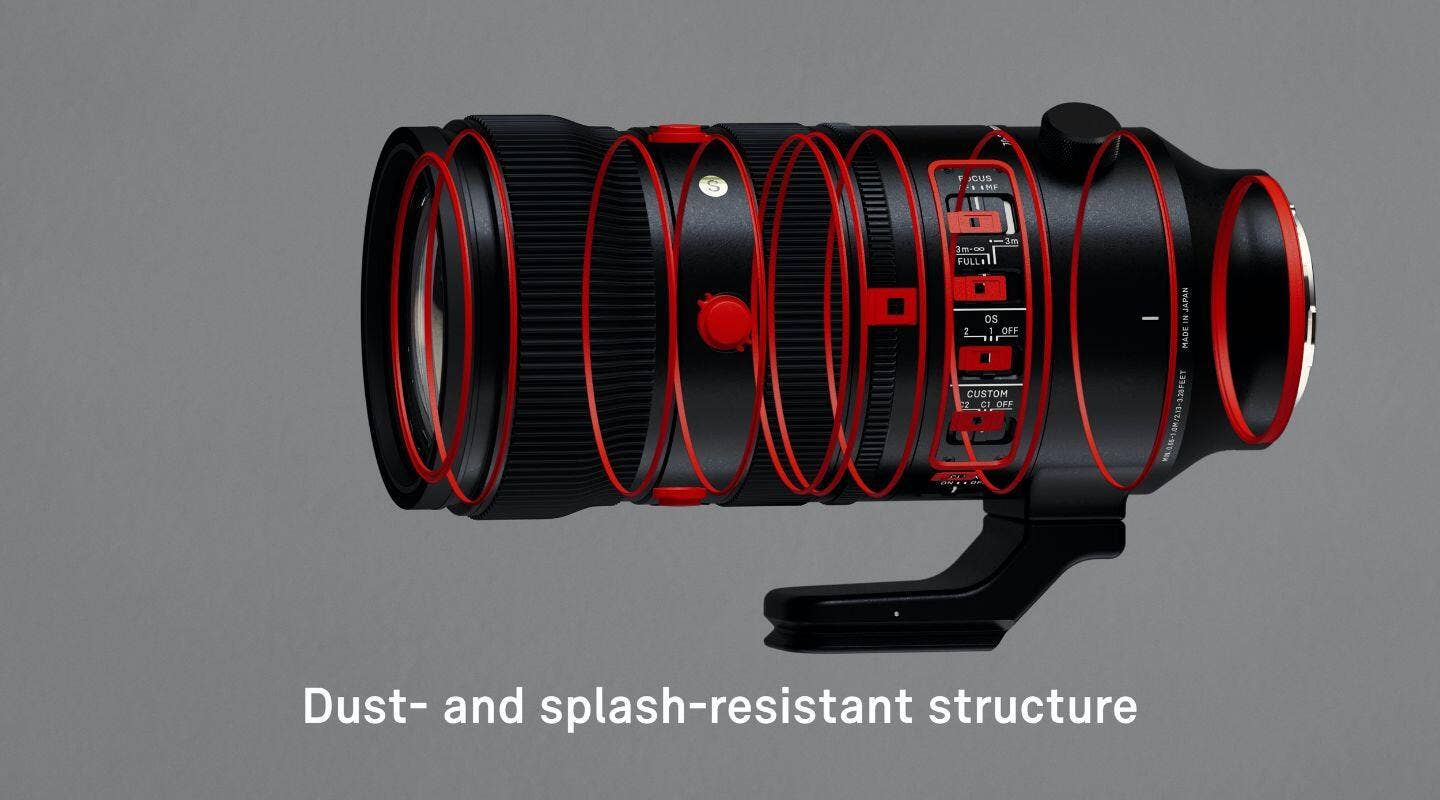

A wealth of functions to assist professional photographers
In addition to an aperture ring, a magnesium tripod mount, and various switches, the highly mobile lens has a wealth of functions available, enabling a more comfortable and versatile shooting experience for users.


Equipped with an aperture ring
This is the first Sigma zoom lens for still photography to be equipped with an aperture ring. It is also equipped with an aperture ring click switch and an aperture ring lock switch, allowing for aperture operation suited to the shooting application.
* When turned ON at the position A, the iris ring is locked at A. When turned ON at a position other than A, it is locked within the range between the maximum to minimum apertures and will not engage at the position A.
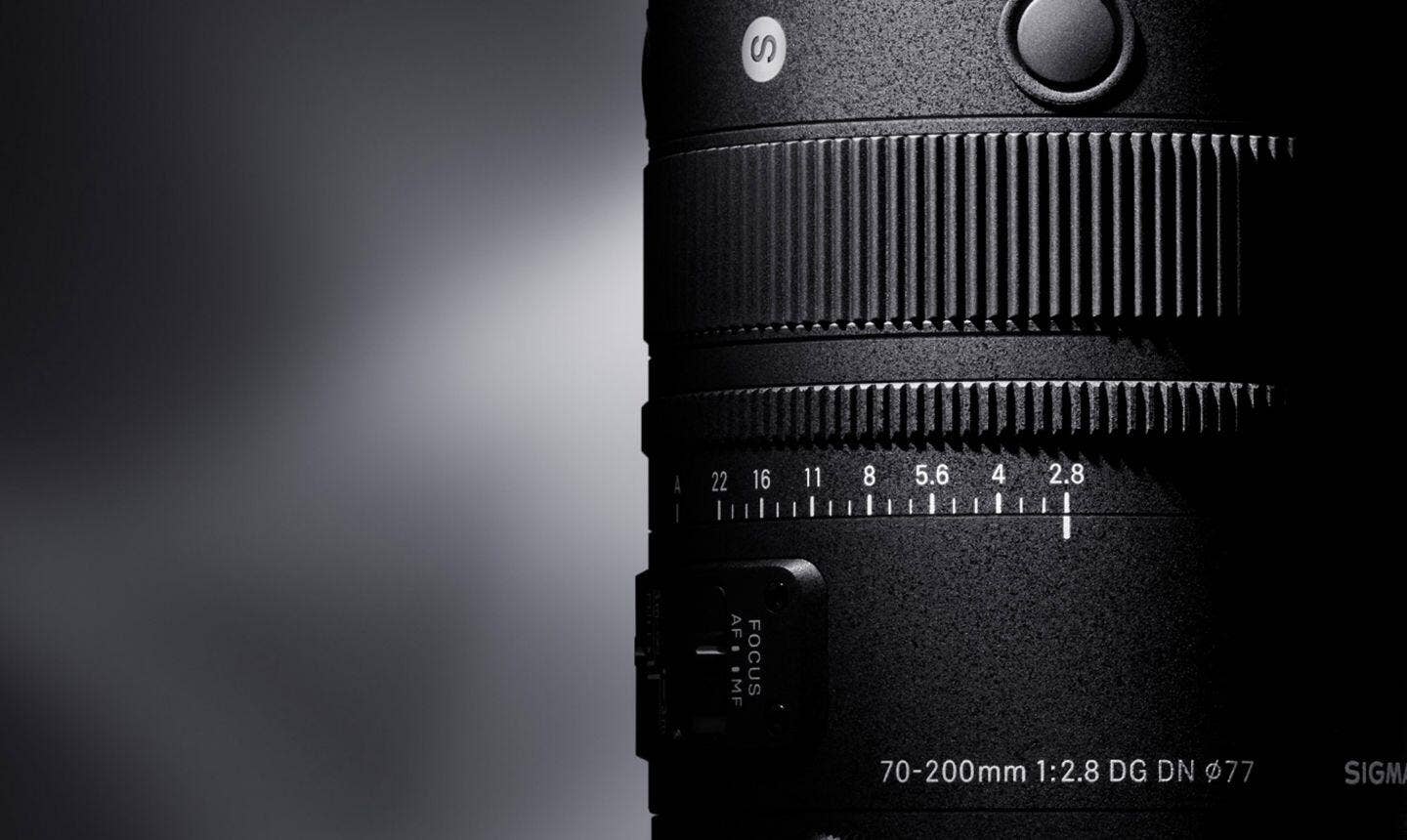

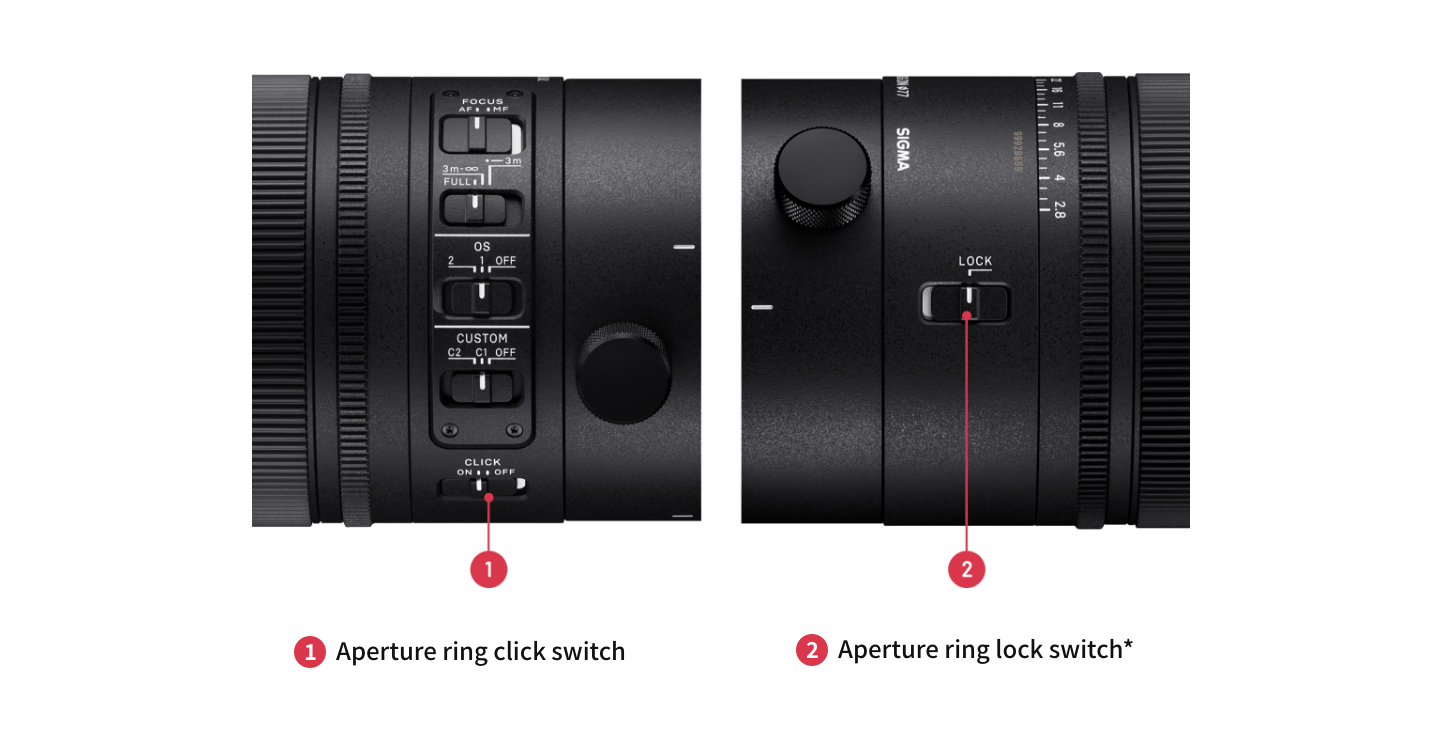

Newly developed tripod socket
The lens body incorporates an Arca-Swiss compatible magnesium alloy tripod socket. The detachable leg is newly designed for the Sigma 70-200mm F2.8 DG DN OS | Sports in order to achieve a compact and lightweight design.


Customizable functions
Equipped with a Focus Limiter switch, the lens enables users to limit the focus driving range during AF when necessary, allowing quick and precise focusing.
Further, the lens features three AFL buttons ready to be assigned to preferred functions using the camera. The AFL buttons are easy to operate regardless of how the camera is oriented or which settings are used.
For the L-Mount version, the Sigma USB DOCK UD-11 can be used to set OS operation or focus limiter range for the Custom Mode switch.
* Only on compatible cameras. Available functions may vary depending on the camera used.
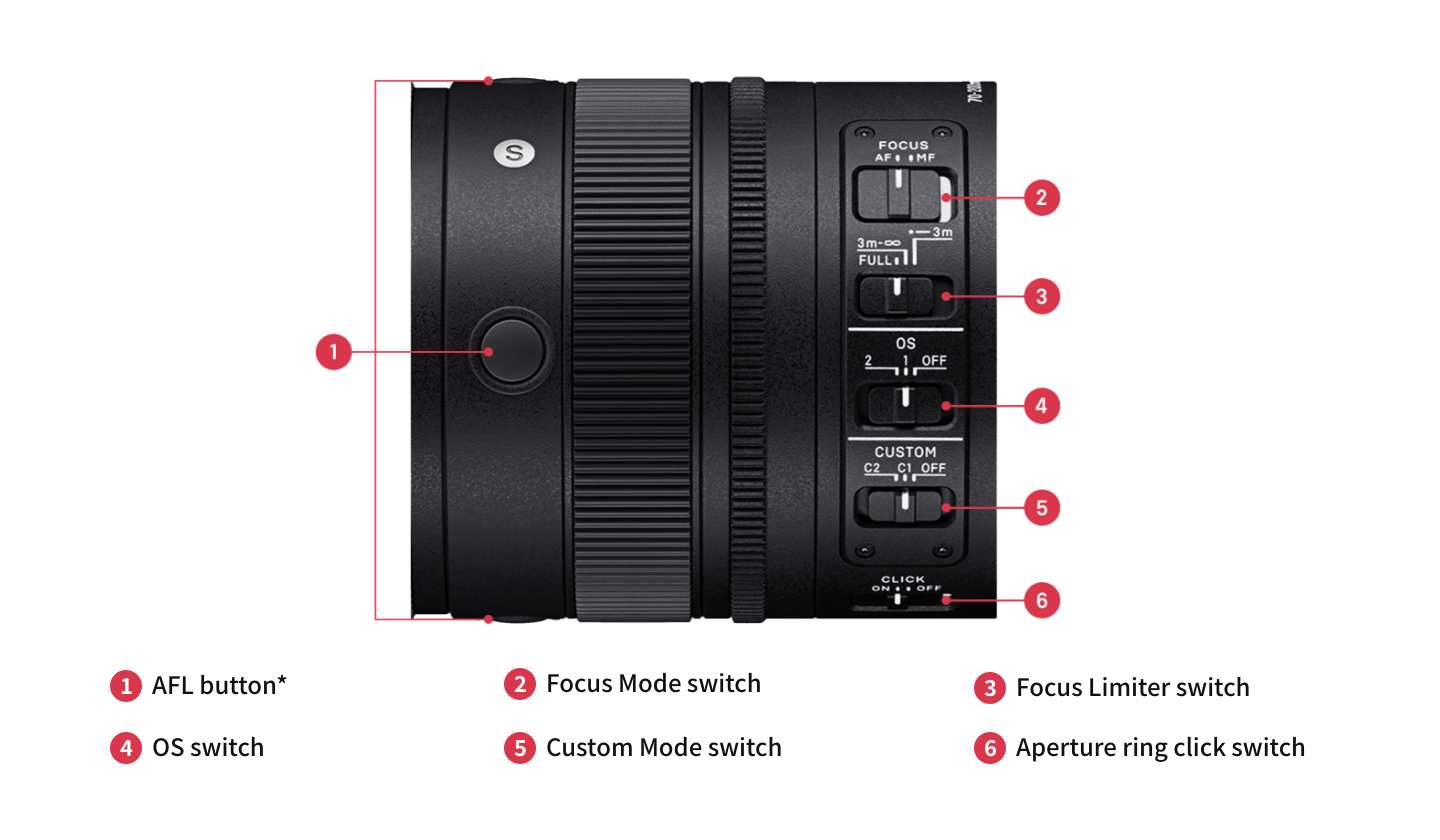

Tele Converter for L-Mount (1.4x / 2.0x)
The L-Mount version of the lens is compatible with the Sigma TELE CONVERTER TC-1411 (1.4x) and TC-2011 (2.0x) . Using a tele converter, the focal length can be multiplied by 1.4x and even 2x, for AF-enabled shooting at ultra-telephoto focal lengths of up to 400mm.


Cover-type lens hood included
A lightweight, high-strength, exclusive cover-type lens hood made of CFRP* is included. In addition to its slim design that does not impair the mobility of the lens, the tip of the hood is rubberized to protect the lens from abrasion and scratches caused by placing the lens upside down.
*CFRP (carbon fiber reinforced plastic), a light but strong material used in the interior and exterior fittings of aircraft, among many other applications.


LENS CONSTRUCTION
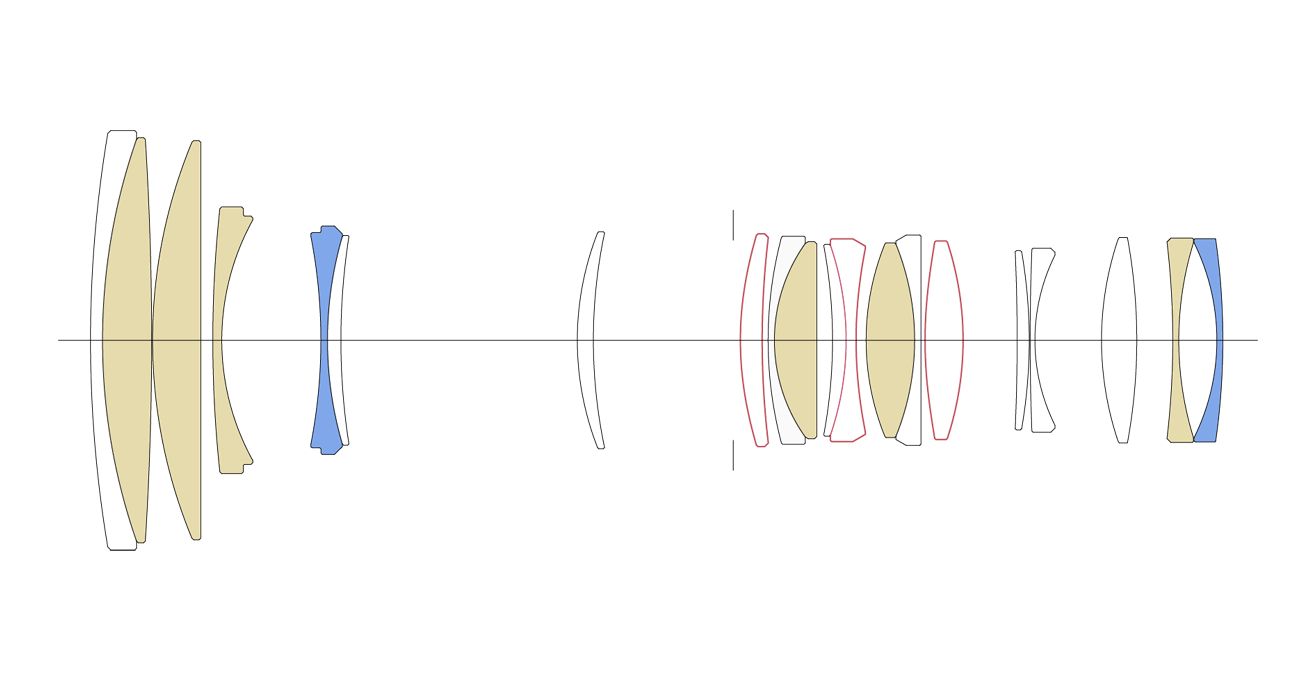

|
|
|
|
MTF CHART
There are two types of MTF chart. One considers the diffraction quality of light, which is called "Diffraction MTF", and the other, "Geometrical MTF" does not.
The quality of light appears in the diffracted light, and becomes more distinct as the F value gets bigger, resulting in lower image quality. Also, diffracted light exists at every aperture, which is why Sigma has been releasing Diffraction MTF data from the beginning since it is very close to the actual image data.
The advantage of using "Geometric MTF" data is that it is easy to measure and calculate since it does not consider the diffraction quality of light, yet it tends to show higher values in the graph than actual images.
The readings at 10 lines per millimeter measure the lens's contrast ability ( red lines), repeating fine parallel lines spaced at 30 lines per millimeter measure the lens's sharpness ability (green lines), when the aperture is wide open.
Fine repeating line sets are created parallel to a diagonal line running from corner to corner of the frame, are called Sagittal lines (S) and sets of repeating lines vertical to these lines are drawn, called Moridional (M) line sets.
*The MTF chart gives the result at the wide-open aperture.
|
Spatial frequency |
S:Sagittal Line |
M: Meridional Line |
|
10lp/mm |
|
|
|
30lp/mm |
|
|
DIFFRACTION MTF
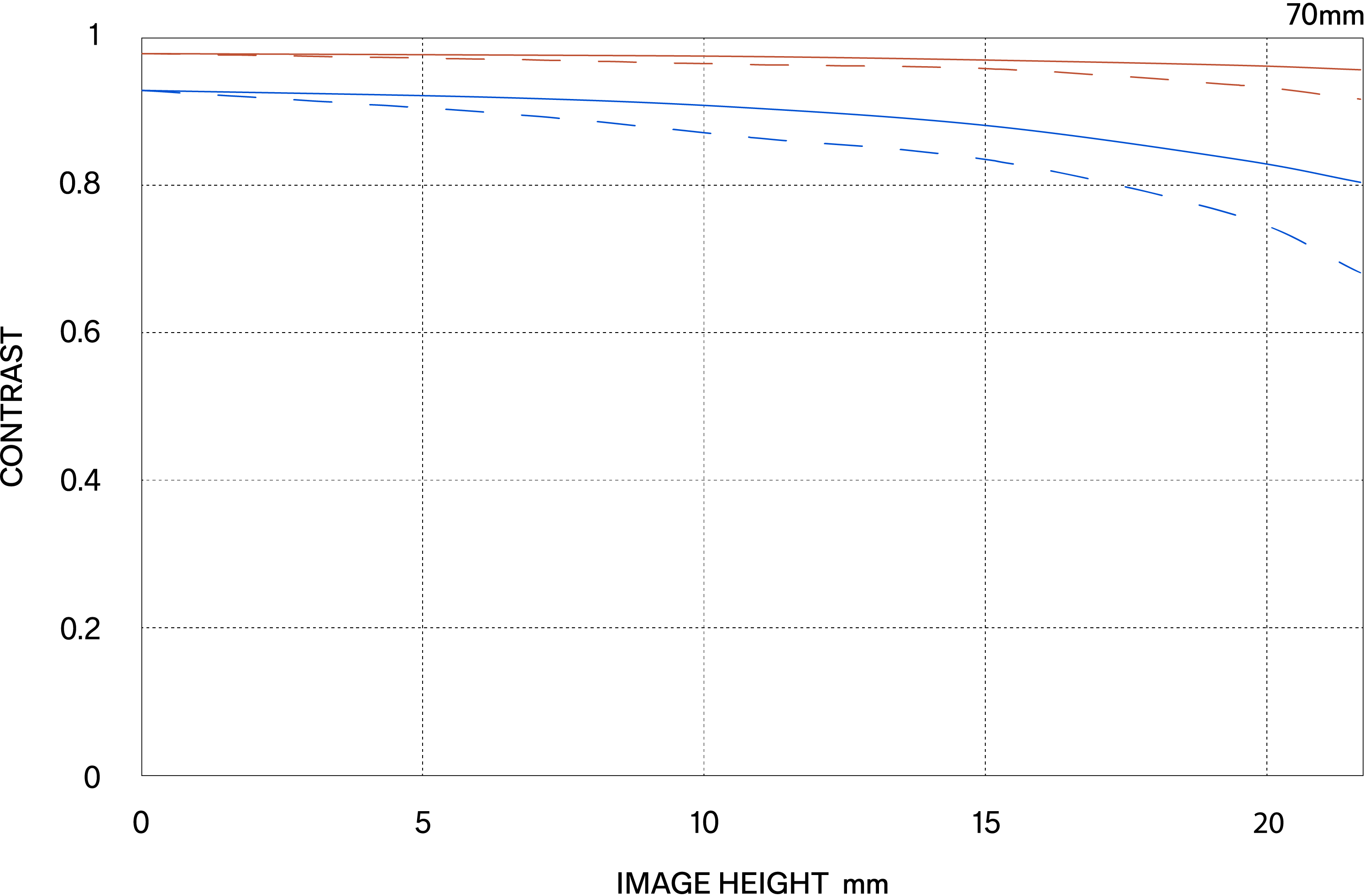

DIFFRACTION MTF
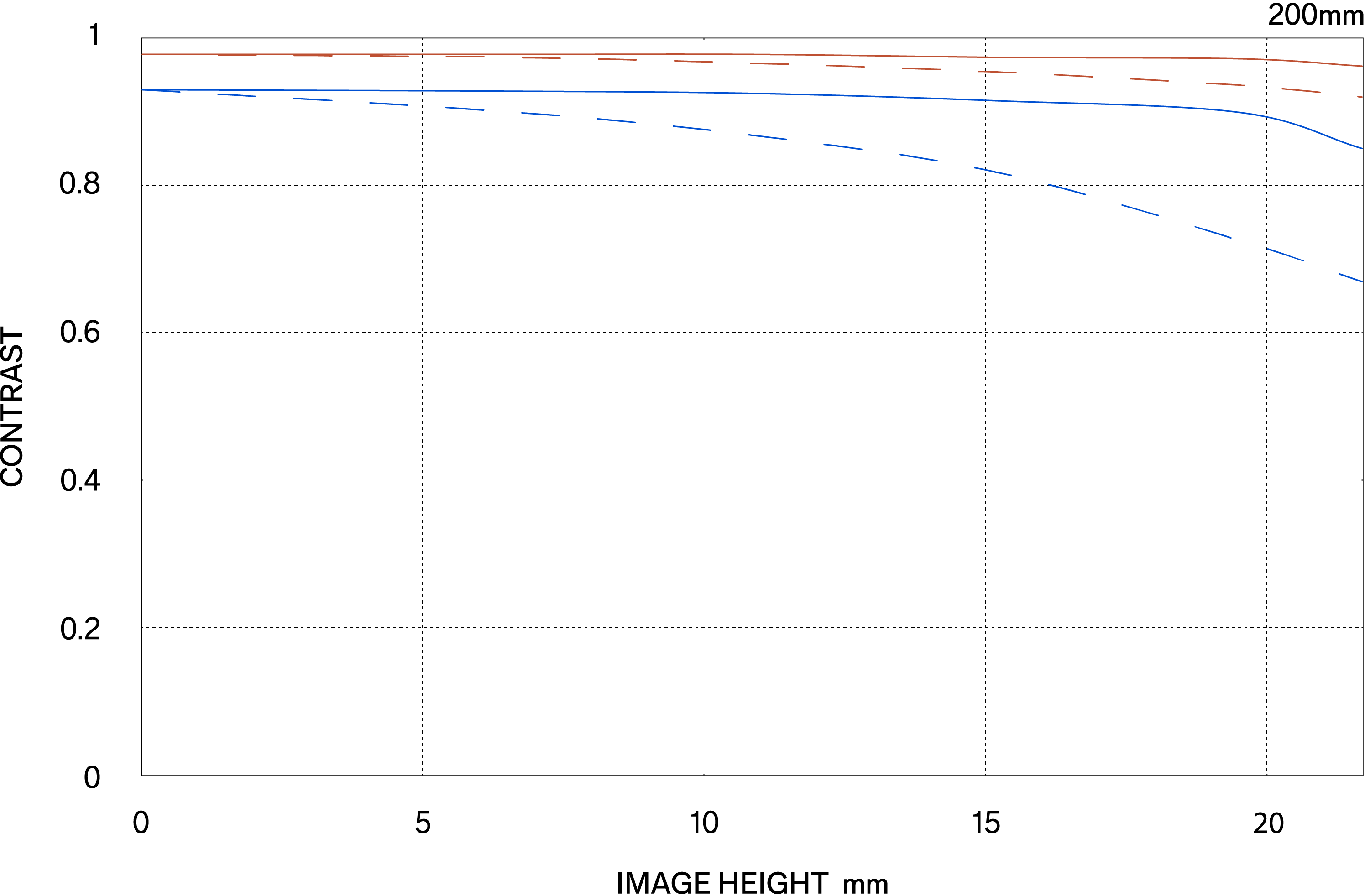

GEOMETRICAL MTF
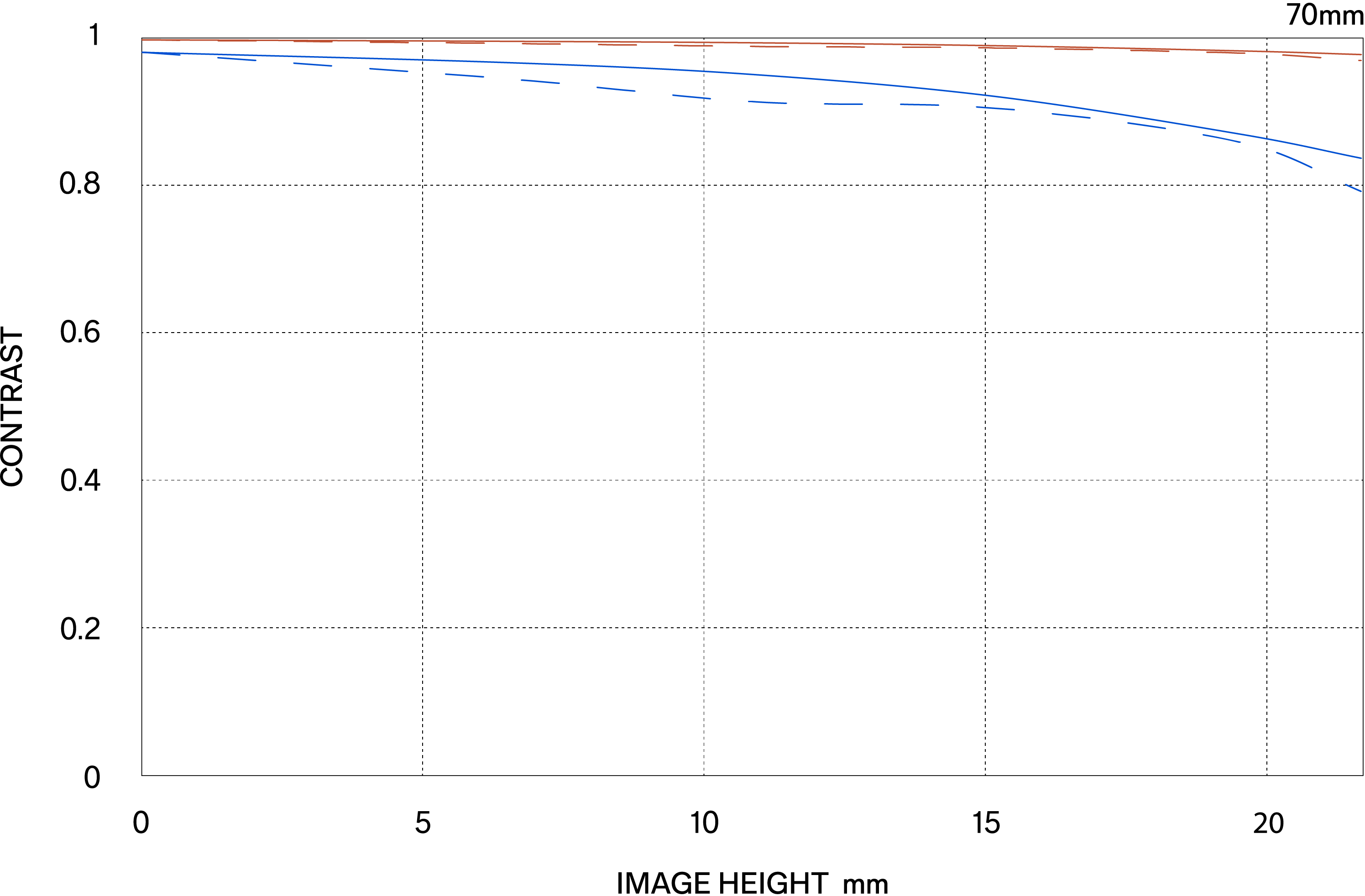

GEOMETRICAL MTF
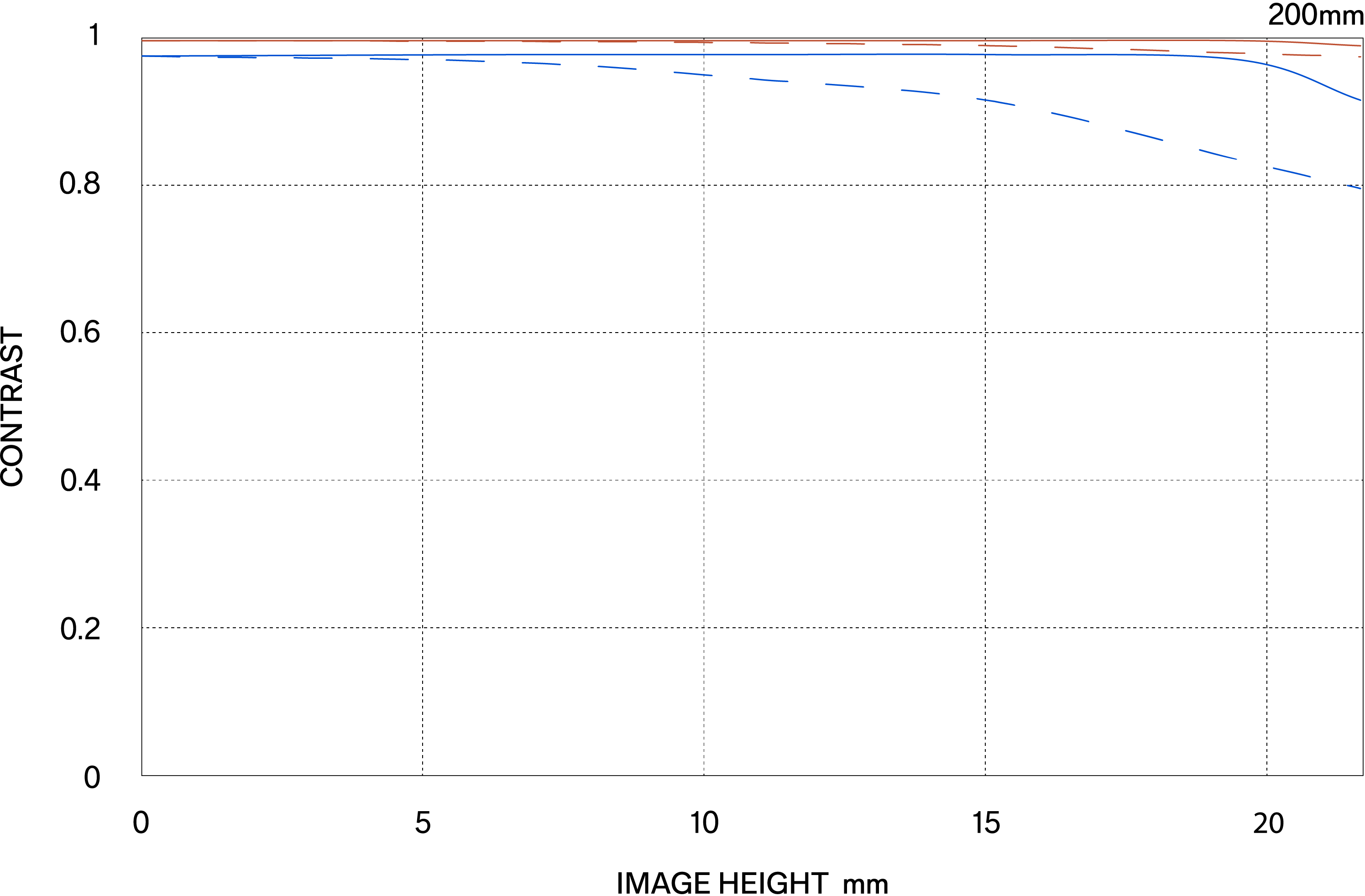

DIFFRACTION MTF (TC-1411)
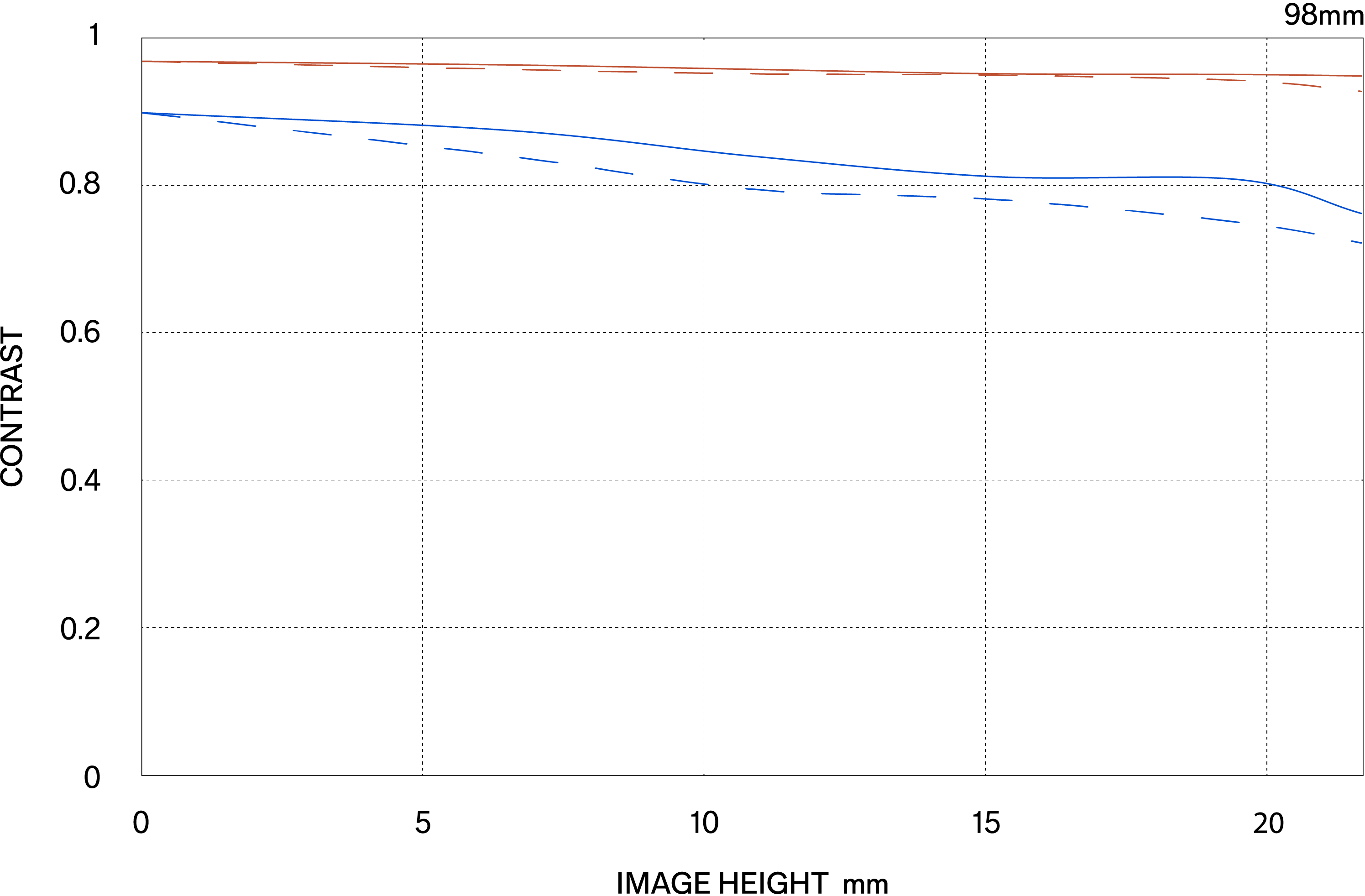

DIFFRACTION MTF (TC-1411)
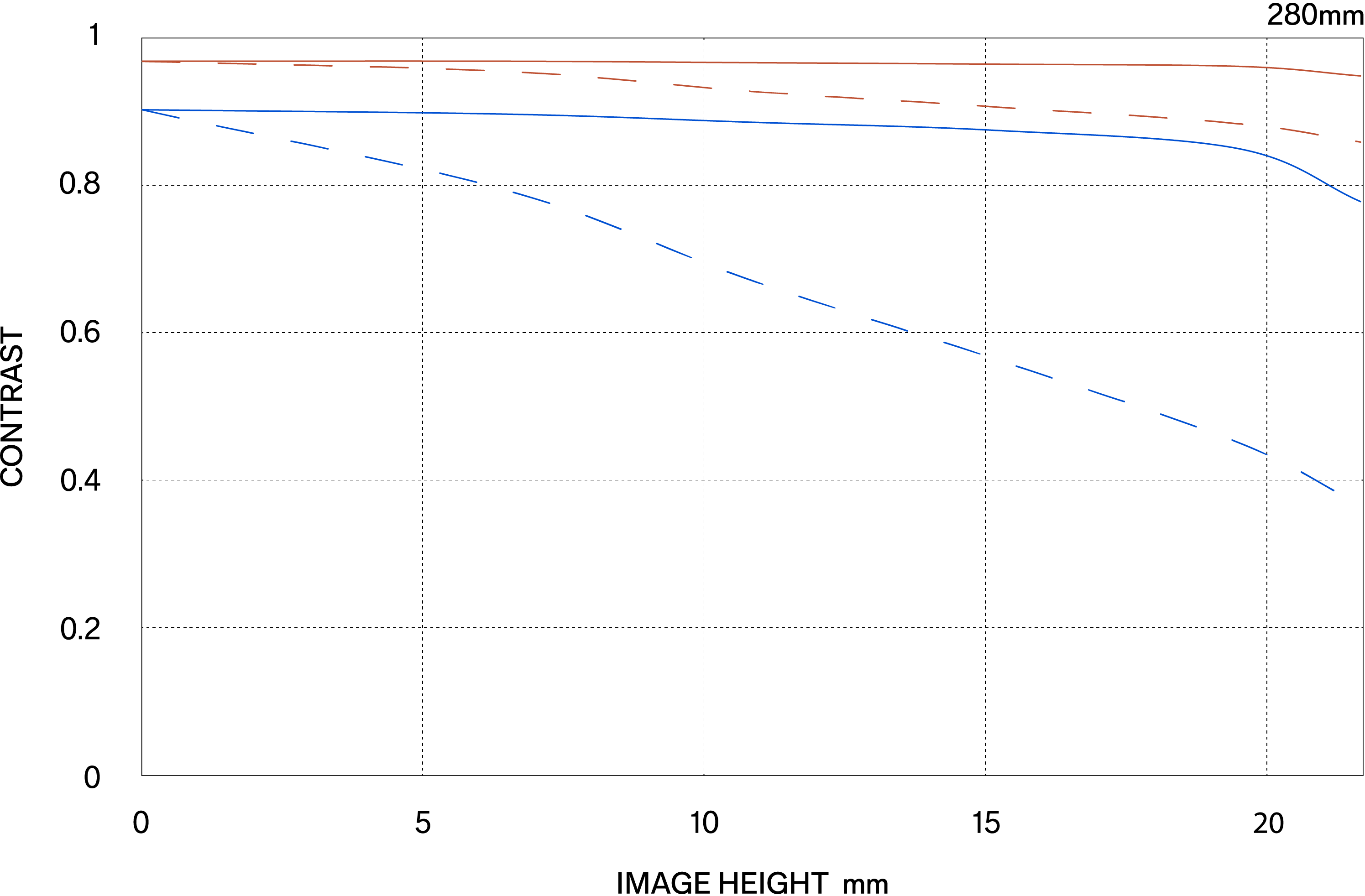

GEOMETRICAL MTF (TC-411)
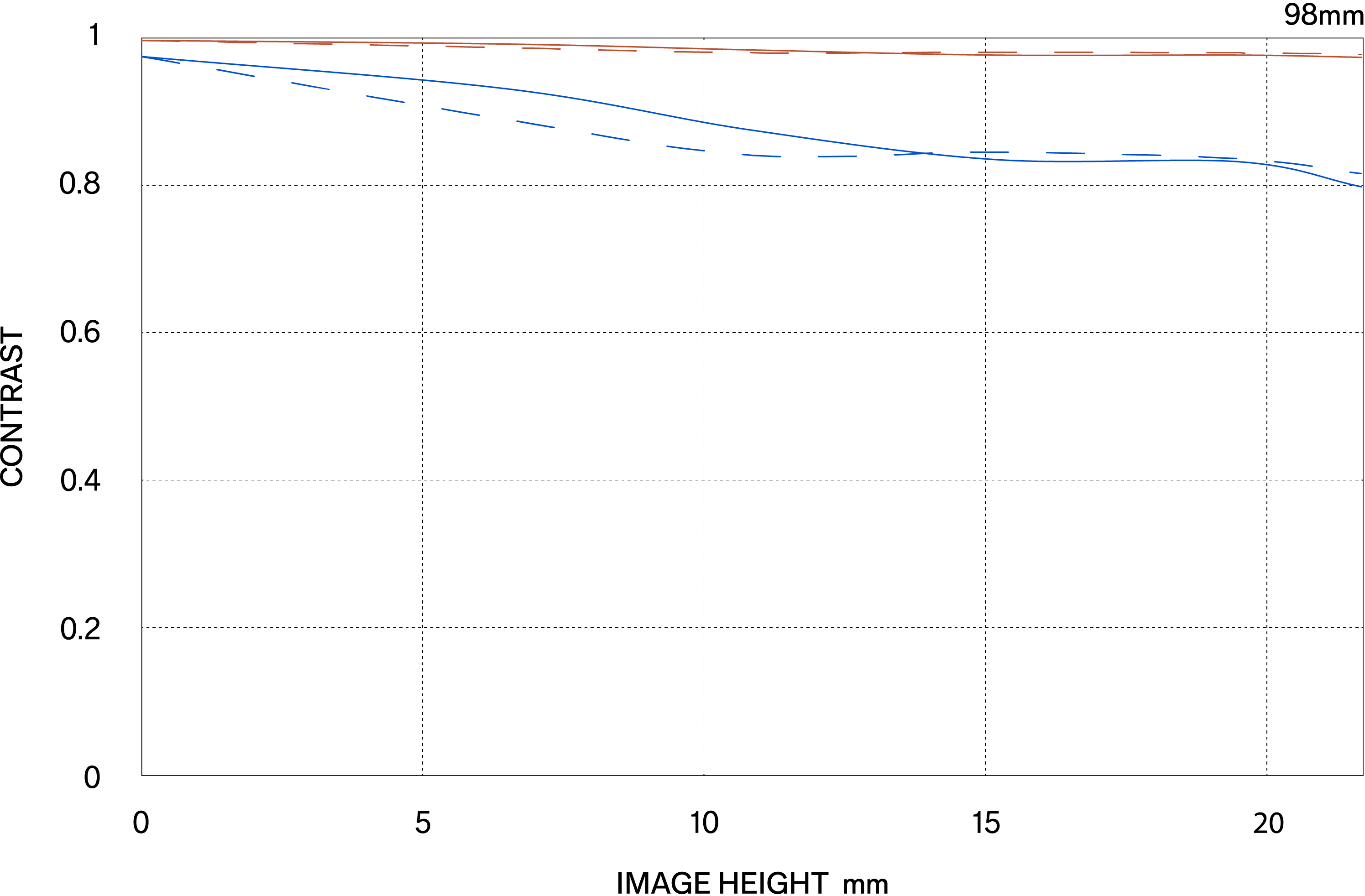

GEOMETRICAL MTF (TC-411)
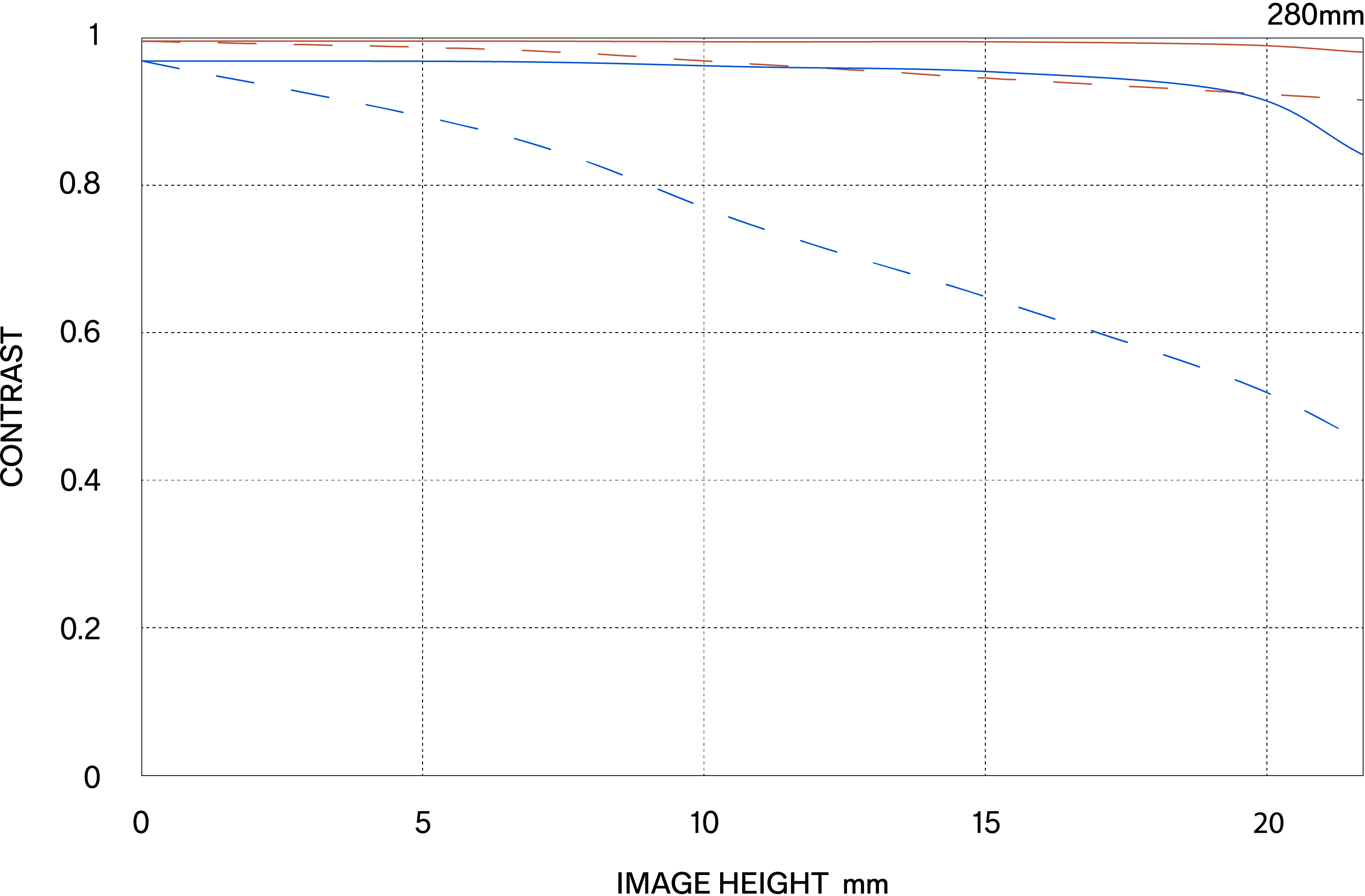

DIFFRACTION MTF (TC-2011)
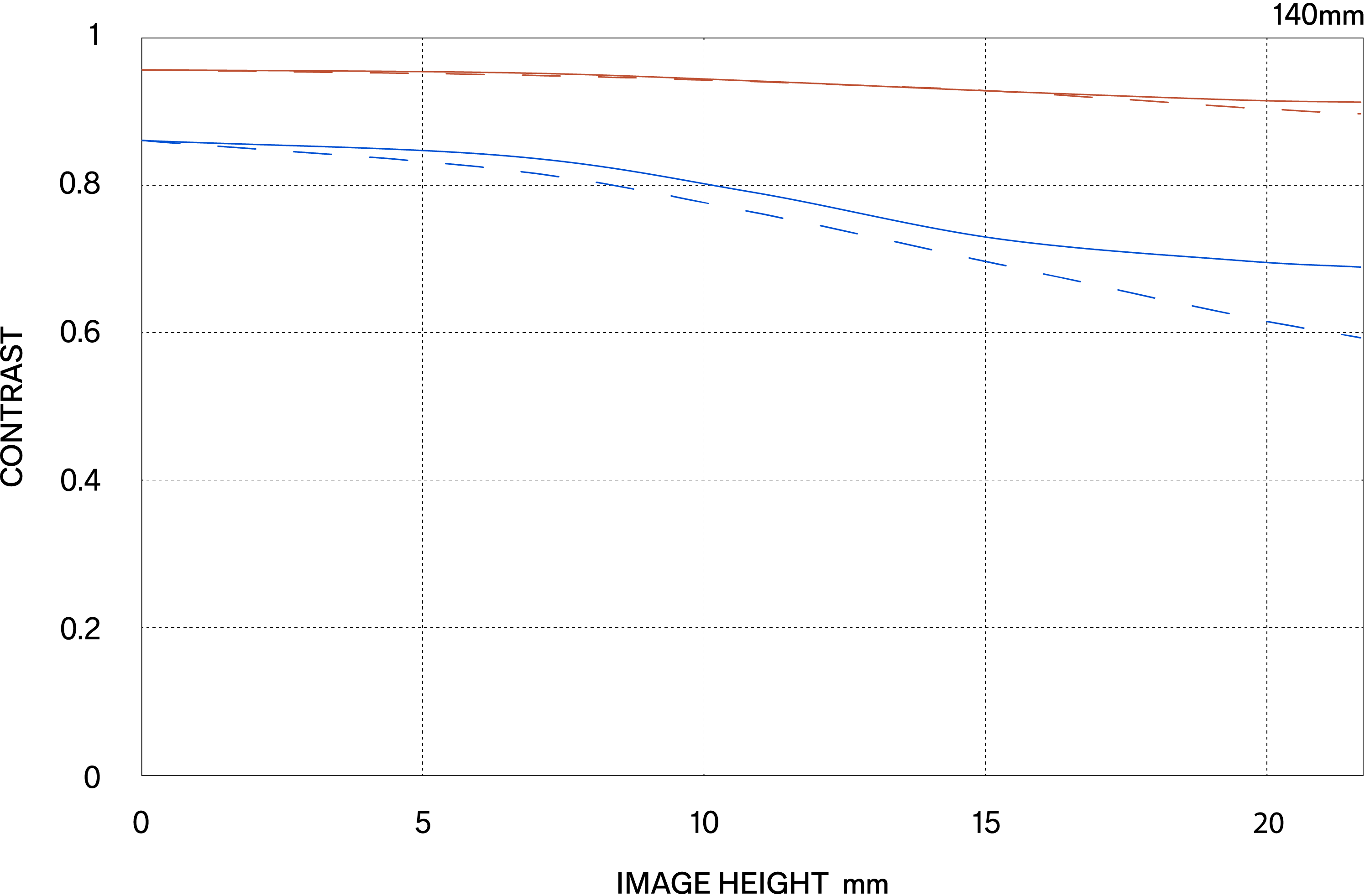

DIFFRACTION MTF (TC-2011)
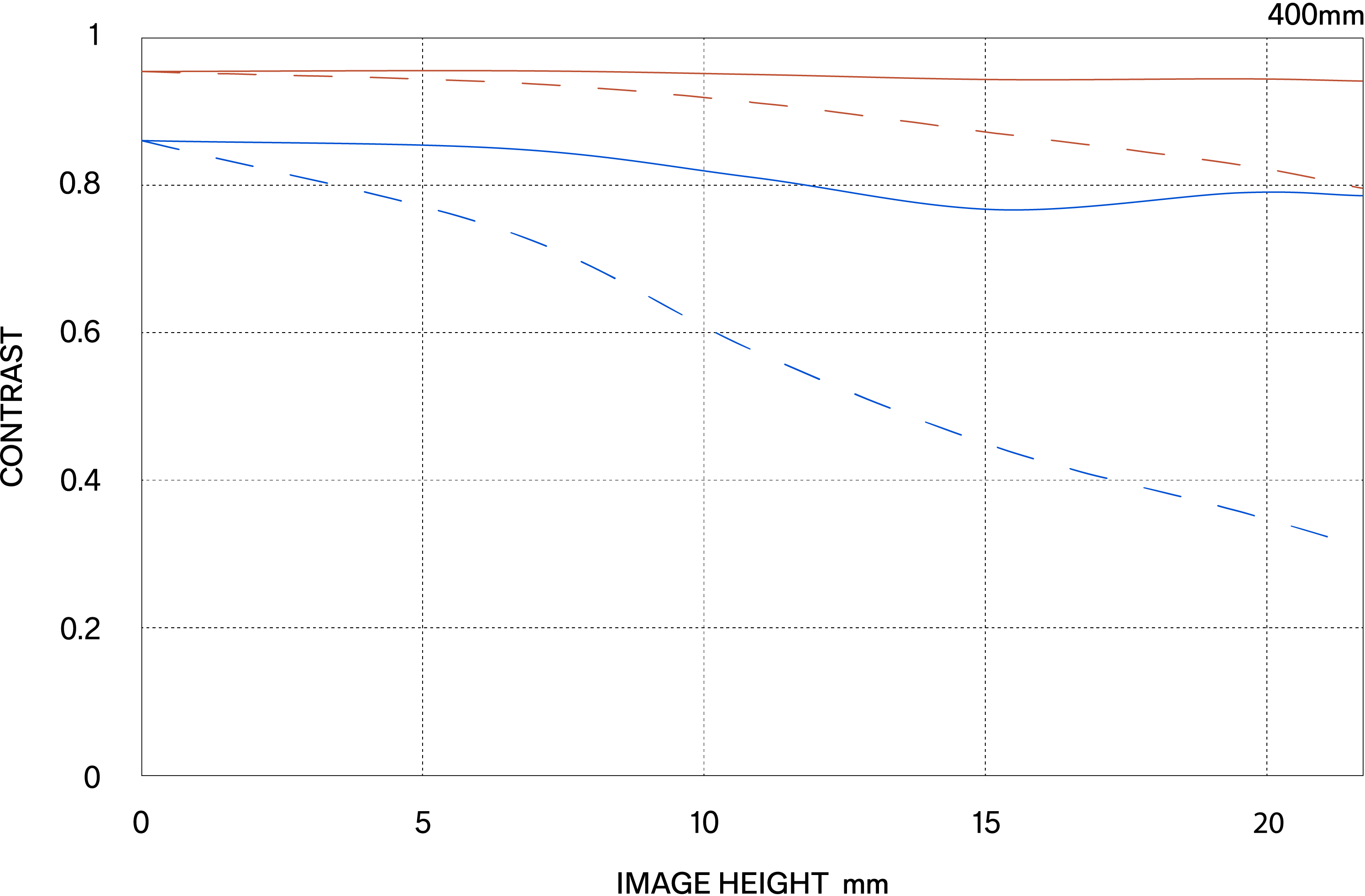

GEOMETRICAL MTF (TC-2011)
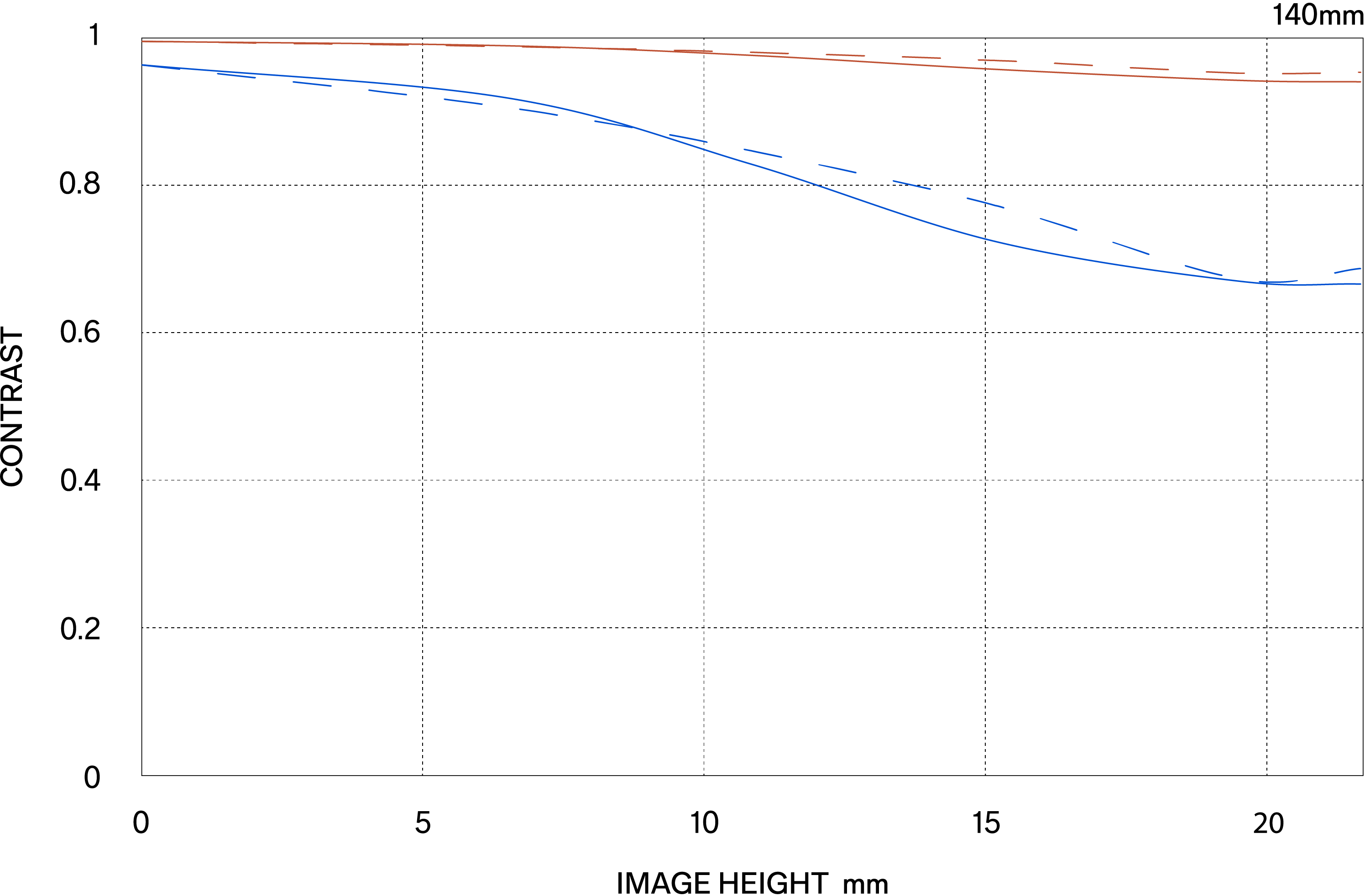

GEOMETRICAL MTF (TC-2011)
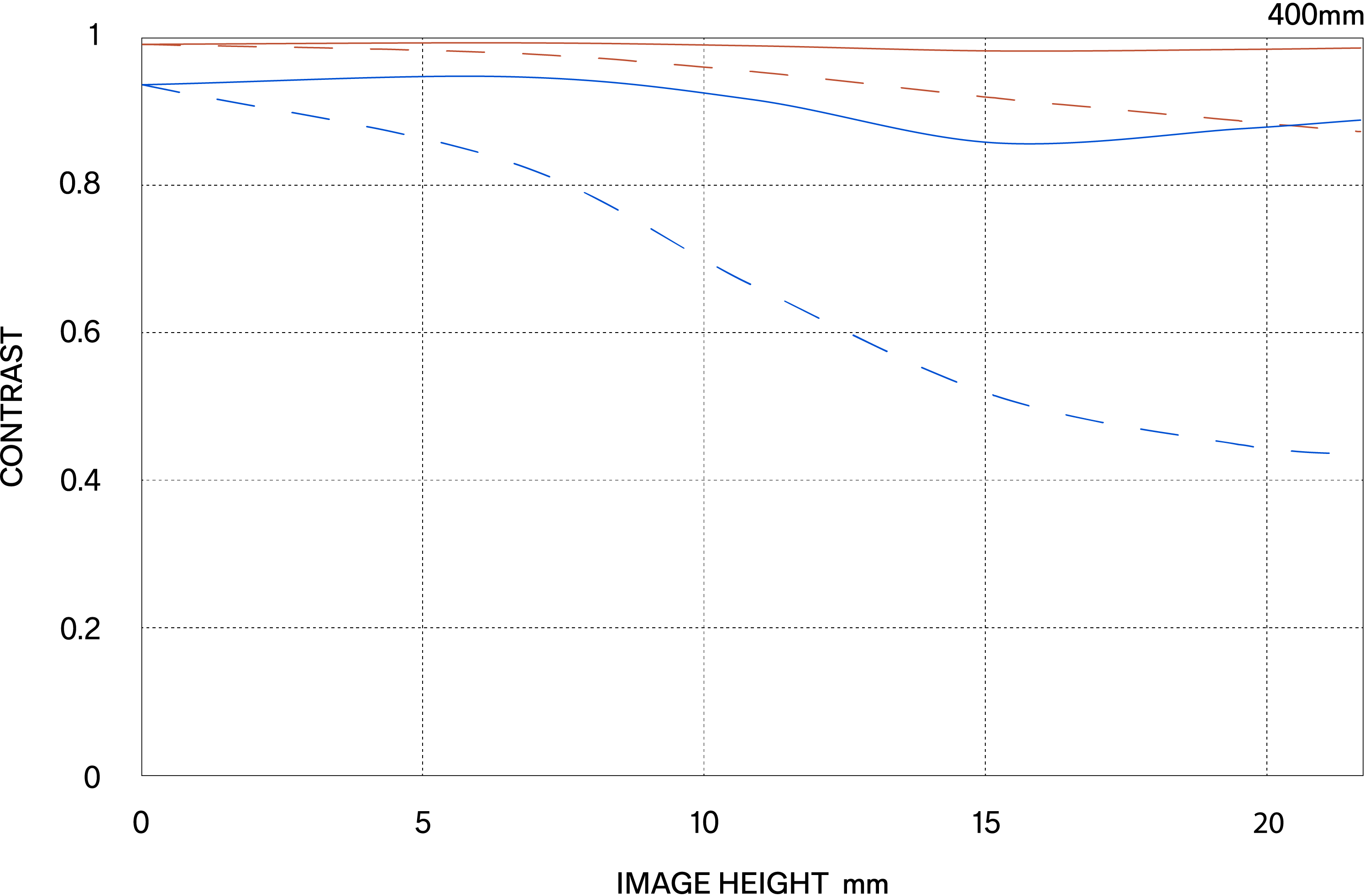

OS (Optical Stabilizer) function
SIGMA's original OS (Optical Stabilizer) function uses sensors inside the lens to detect any motion, then moves specific lens elements in order to effectively minimize blur caused by such movement. Owing to the stabilized image in the viewfinder, it is possible to fine-tune composition and ensure accurate focusing.
OS2
OS2 is the newly developed optical stabilizer algorithm. Compared to the previous algorithm used by SIGMA lenses, OS2 improves the effect of optical stabilization significantly.
Inner Zoom
The lens incorporates an inner zoom. With their unchanging barrel length, these lenses also enhance balance and stability for the photographer. Furthermore, since the front of the lens does not rotate, polarizing filters can be used with extra convenience.
Inner focus system
To increase stability, this lens configuration uses movable internal lens elements that adjust focus without changing the length of the lens barrel.
HLA (High-response Linear Actuator)
HLA is SIGMA's proprietary linear motor. It drives the focus lens directly without going through gears or other mechanical parts, resulting in quiet, high-precision autofocusing.
Nano Porous Coating
The super multi-layer coating is combined with SIGMA's unique coating technology "NPC (Nano Porous Coating)". The lens has been designed to be less susceptible to strong incident light such as backlight.
"NPC (Nano Porous Coating)" incorporates porous silica as the coating material. The porous silica layer has nano-sized holes with air inside. Having holes of this size enables a large reduction in the refractive index, allowing the reflectance to be lowered more than conventional anti-reflective coatings. As a result, reflected light causing flares and ghosting is sharply reduced, achieving clear image quality.
Super Multi-Layer Coating
SIGMA's own Super Multi-Layer Coating suppresses flare and ghosting by preventing reflections with in the lens. All lenses in the current SIGMA range feature this original technology. In digital cameras, flare and ghosting may also be caused by reflections between the image sensor and lens surfaces. Here too, SIGMA's Super Multi-Layer Coating is highly ef fective, assuring images of outstanding contrast.
Water and oil repellent coating
Incorporates a water and oil-repellent coating that allows water to be wiped away easily and prevents oil and fat from sticking to the surface, even in challenging shooting conditions. At the same time, the maintenance of the lens surface becomes easier.
Aperture ring
Aperture ring, designed to help users work intuitively
Aperture ring click switch
Mounted with a de-click function for removing clicks by the aperture ring click switch, enabling seamless operations that are especially useful such as during video shooting.
Aperture ring lock switch
A ring lock system to prevent from unintended movement of the aperture ring during shooting.
AFL button
the AFL button can be assigned with various functions widens the range of operations available on the lens.
Focus Limiter
Offers customization for the driving range of auto focus. It makes it possible to limit the drive range from a specific distance to a long distance or a short distance.
Focus Mode Switch
Using this swich, it is possible to switch the focus mode between AF and MF.
Dust and Splash Resistant Structure
This lens features a highly effective dust and splash resistant structure with special sealing at the mount connection, manual focus ring, zoom ring, and cover connection.
*Although this construction allows the lens to be used in light rain, it is not the same as being waterproof, so please prevent large amounts of water from splashing on the lens. It is often impractical to repair the internal mechanism, lens elements and electric components if they are damaged by water.
Lens construction: 20 elements in 15 groups (6 FLD, 2 SLD, 3 aspherical elements)
Compatible with high-speed autofocus
Supports DMF and AF+MF
Compatible with AF assist (Sony E-mount only)
Support for switching between linear and non-linear focus ring settings (for L-Mount only)
OS switch
Custom Mode switch
LENS HOOD LH860-01
TRIPOD SOCKET TS-151 *Detachable lens foot type
Compatible with SIGMA TELE CONVERTER TC-1411 / TC-2011 (sold separately / for L-Mount only)
Designed to minimize flare and ghosting
Every single lens undergoes SIGMA’s proprietary MTF measuring system
11-blade rounded diaphragm
High-precision, durable brass bayonet mount
PERFORMANCE, RELIABILITY
AND MOBILITY AT ITS HIGHEST LEVEL.
Packed with all the technology Sigma has to offer
70-200mm F2.8, worthy of the flagship
The large F2.8 aperture provides stable and high descriptive performance at all zoom and focus ranges. The high-speed AF with a dual HLA (High-response Linear Actuator) based on a floating focus structure, and the Optical Stabilizer function with the OS2 algorithm with up to 7.5 stops of correction effect*, ensure that users can take the right shot when there is no room for error. The highly mobile lens with high durability, rigidity, and texture is equipped with a wealth of functions to assist comfortable shooting, including an inner zoom mechanism for easy handling, as well as an aperture ring and switches with various customization functions. The flagship Sigma 70-200mm F2.8 DG DN OS | Sports, combined with the best of Sigma’s latest technologies to meet the high-level demands of professionals, has finally arrived.
* Based on CIPA guidelines (Measured at 70mm and 200mm with a 35mm full-frame image sensor)
















